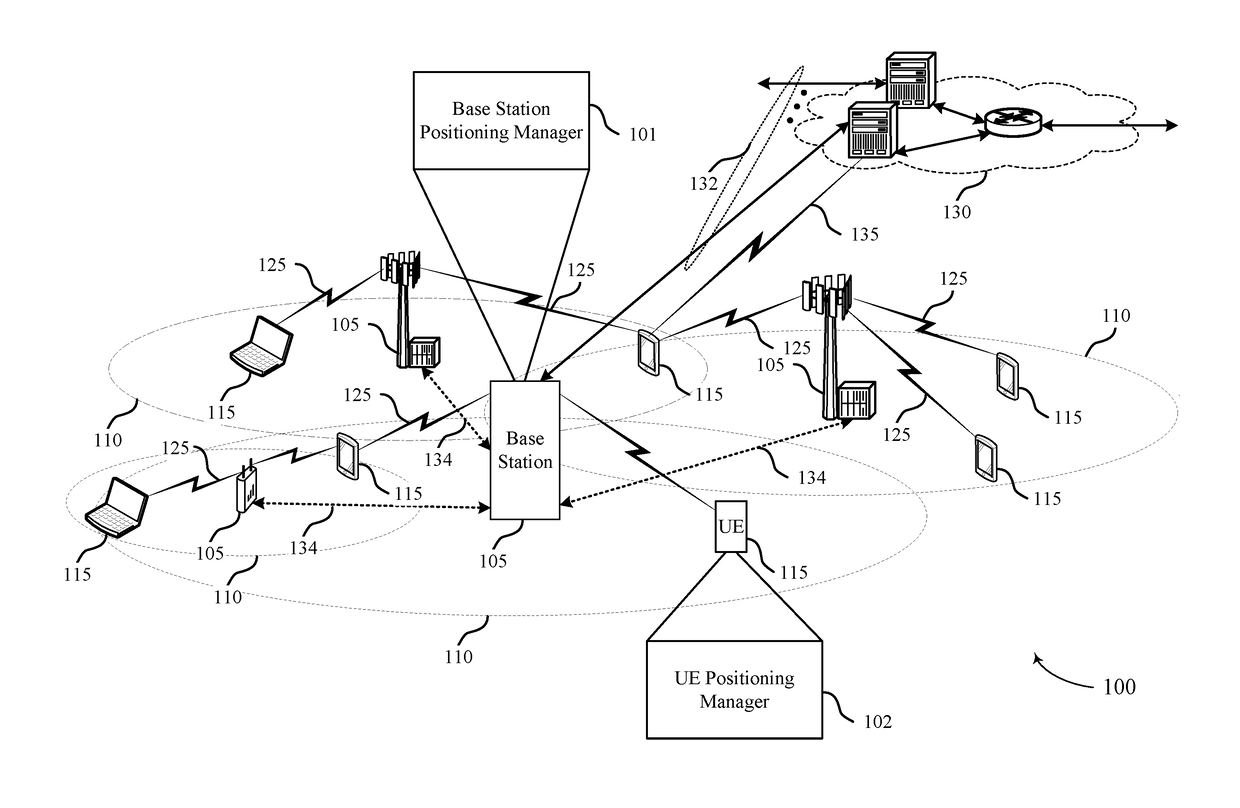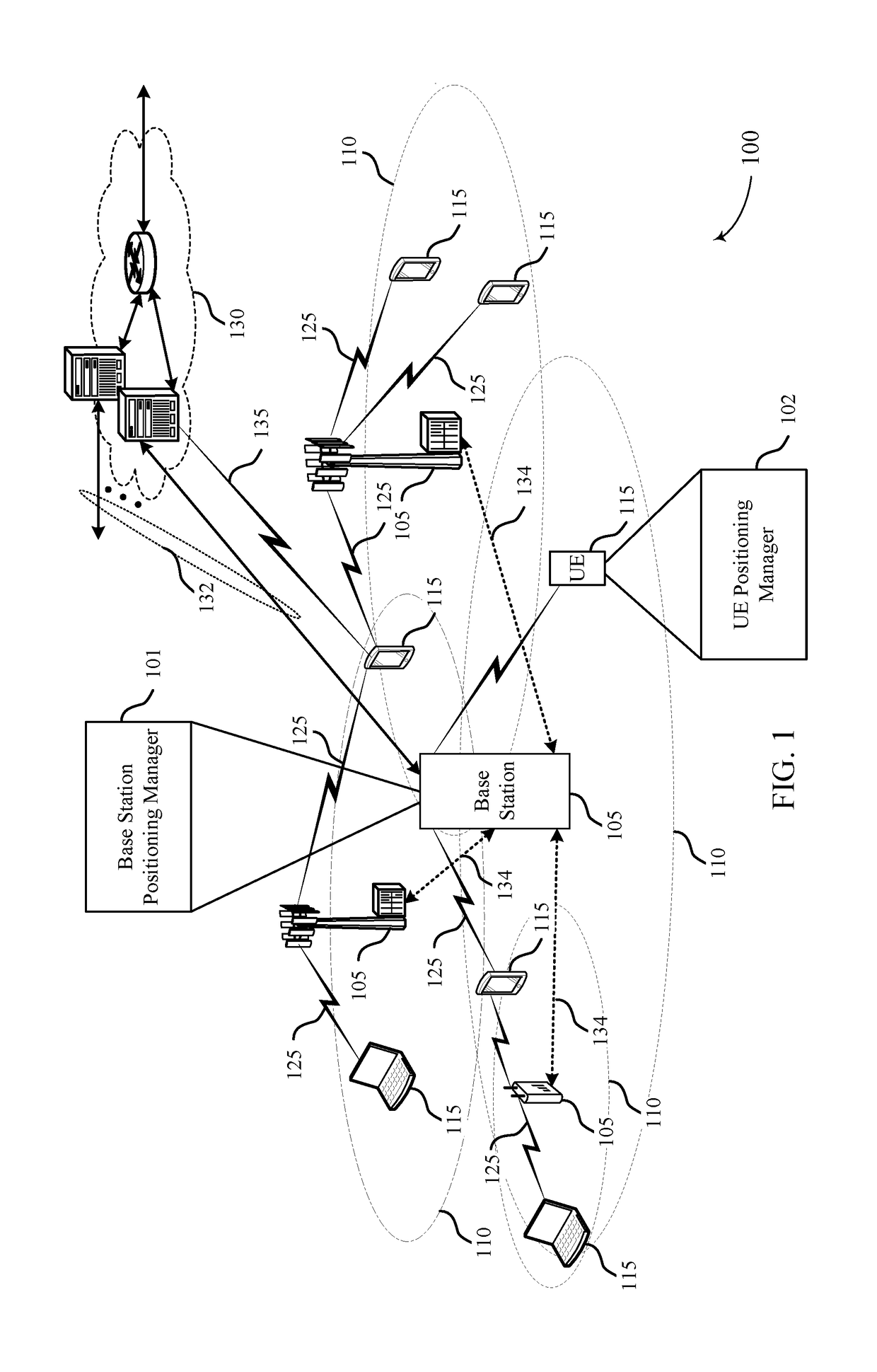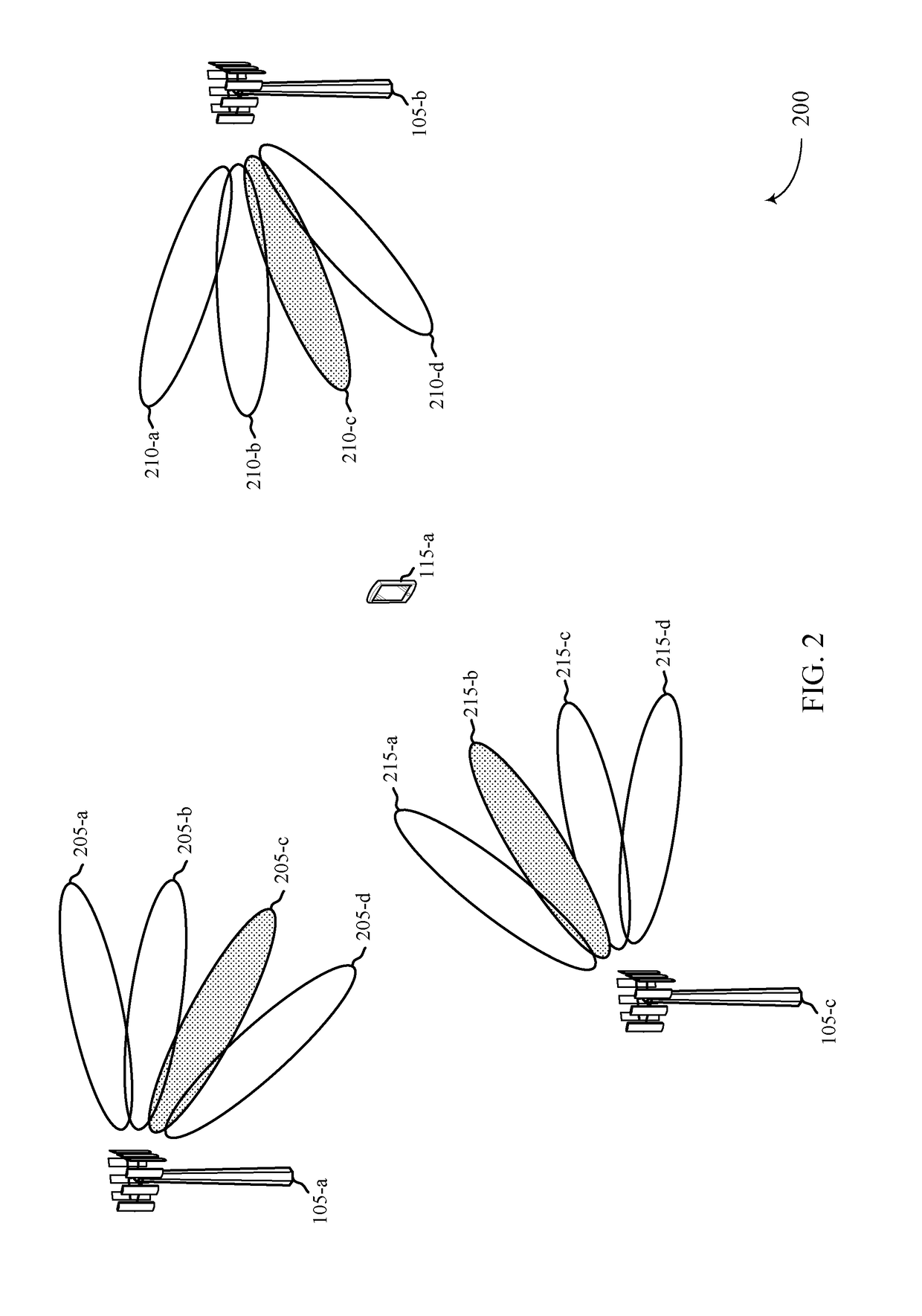Positioning in beamformed communications
a beam-formed communication and positioning technology, applied in the field of positioning in mmw communications, can solve problems such as the challenge of determining the location of ues operating in wireless networks
- Summary
- Abstract
- Description
- Claims
- Application Information
AI Technical Summary
Benefits of technology
Problems solved by technology
Method used
Image
Examples
Embodiment Construction
[0047]Some wireless communication systems (e.g., LTE) may use two types of positioning mechanisms—downlink-based (e.g., observed time difference of arrival (OTDOA)) and uplink-based (e.g., uplink time difference of arrival (UT-DOA)). In the downlink-based positioning, a PRS is transmitted with a certain periodicity on the downlink. The UE measures the difference between the arrival times of the PRS from multiple eNodeBs, and reports this back to the network. The network uses these reports and the known base station locations in order to determine the UE location. The PRS may be broadcast from each base station with strong enough power to be heard not only by the UEs in that cell, but also by those in neighboring cells. Accurate positioning may use reports from multiple base stations.
[0048]Uplink-based positioning may be transparent to the UE, and may include the network measuring a time-delay of arrival of the UE uplink at various base stations. This may be feasible because the UE t...
PUM
 Login to View More
Login to View More Abstract
Description
Claims
Application Information
 Login to View More
Login to View More - R&D
- Intellectual Property
- Life Sciences
- Materials
- Tech Scout
- Unparalleled Data Quality
- Higher Quality Content
- 60% Fewer Hallucinations
Browse by: Latest US Patents, China's latest patents, Technical Efficacy Thesaurus, Application Domain, Technology Topic, Popular Technical Reports.
© 2025 PatSnap. All rights reserved.Legal|Privacy policy|Modern Slavery Act Transparency Statement|Sitemap|About US| Contact US: help@patsnap.com



